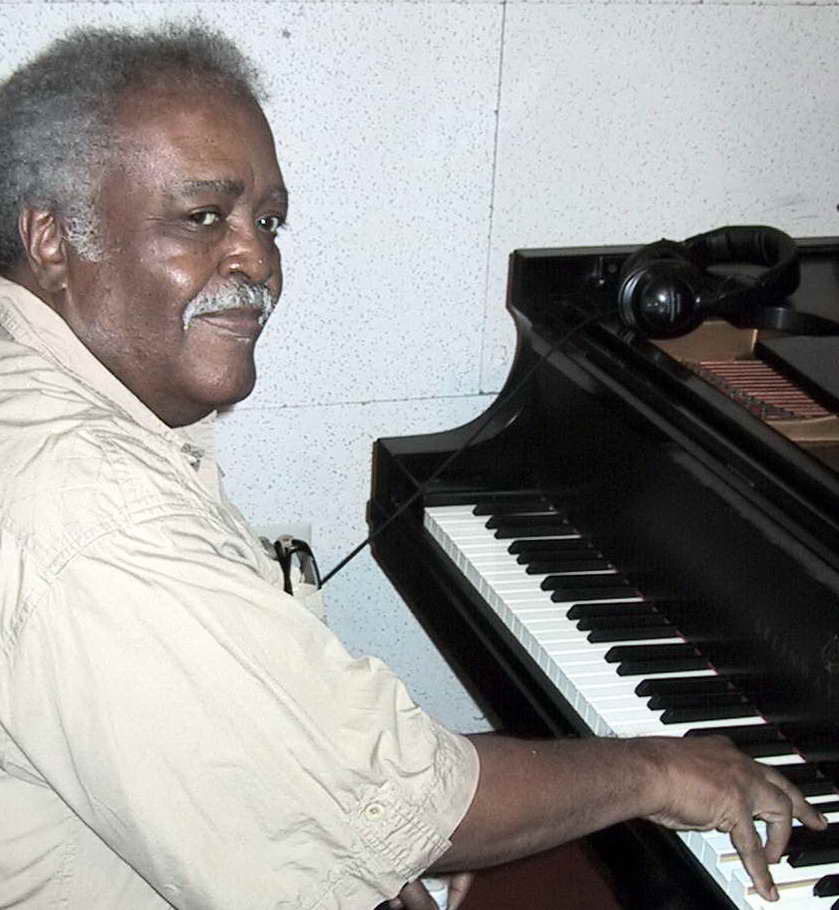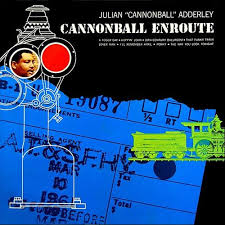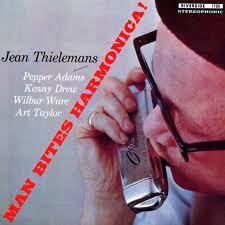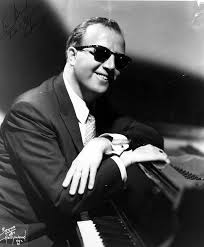18th Century Ballroom – Ray Bryant
A charming, sweet, and thoroughly versatile head. Available in two very different arrangements. Solo piano arrangement also available.
- Recording: Cannonball Adderley - Cannonball Enroute
- Recorded on: February 7, 1957
- Label: Mercury (MG 20616)
- Concert Key: G
- Vocal Range: , to
- Style: Swing (medium up)
- Alto Sax - Cannonball Adderley
- Cornet - Nat Adderley
- Piano - Junior Mance
- Bass - Sam Jones
- Drums - Jimmy Cobb
Video
- Description
- Historical Notes
- Solos
- Piano Corner
- Bass Corner
- Drum Corner
- Guitar Corner
- Inside & Beyond
- Minus You
Available Editions: Because the two featured arrangements are so different, we've made different parts for the Adderley "Cannonball Enroute" recording and the Thielemans "Man Bites Harmonica" recording.
The Adderley recording is a standard arrangement of this composition with the melody complemented by a lower harmony line. First parts are labeled as the lead sheet and second parts are labeled as such. Bass players have their own bass part. You can see all parts at once on the Concert Condensed Score, recommended for pianists and drummers.
If you're just playing this composition by yourself, purchase either version of the lead sheet in the correct edition for your instrument—or buy both versions to see how this song was adapted for each recording!
This Ray Bryant composition represents the title perfectly, as if jazz musicians were playing in that ballroom setting. That said, the bass part has a strict classical feel in this Cannonball Adderley arrangement. The all-star cast of players can't help but groove on this very classical-influenced melody, which puts you in the position of playing a written part with the ever-so-steady Sam Jones (playing bass on the recording). Of course it doesn't hurt that Jimmy Cobb and Junior Mance fill out the rest of the rhythm section on this bouncy tune.
Related Songs
Email Send 18th Century Ballroom to a friend
- Recording: Toots Thielemans - Man Bites Harmonica
- Recorded on: December 30, 1957
- Label: Riverside (RLP 12-257)
- Concert Key: G
- Vocal Range: , to
- Style: Swing (medium up)
- Guitar - Toots Thielemans
- Baritone Sax - Pepper Adams
- Piano - Kenny Drew
- Bass - Wilbur Ware
- Drums - Art Taylor
Video
- Description
- Historical Notes
- Solos
- Piano Corner
- Bass Corner
- Drum Corner
- Guitar Corner
- Inside & Beyond
- Minus You
Available Editions: Because the two featured arrangements are so different, we've made different parts for the Adderley "Cannonball Enroute" recording and the Thielemans "Man Bites Harmonica" recording.
The Thielemans recording features a canon-like arrangement with the second part restating the melody one measure after the first part. You can see all parts at once on the Concert Condensed Score, recommended for pianists and drummers. First parts are labeled as the lead sheet and second parts are labeled as such. Bass players have their own bass part.
For the Thielemans recording, the recorded guitar melody and bari sax answering second part would also sound great with the same parts being played by trumpet and alto sax, or two trumpets. Everything would be up an octave from the original recording. In fact I just played each part (I'm Don Sickler, on trumpet) with the recording, and enjoyed playing and phrasing the added octave above the original parts.
If you're just playing this composition by yourself, purchase either version of the lead sheet in the correct edition for your instrument—or buy both versions to see how this song was adapted for each recording!
This bass part fits two of our categories: It's an Essential Bass part, but also a Basic Bass part, giving you another important lesson as a bass player.
Although the melody is the same as on the Cannonball Adderley version, the bass is treated quite differently for this recording. Rather than playing a syncopated part, bassist Wilbur Ware keeps the entire tune in 2-feel, helping the melody and harmony parts stand out more. And on this particular version, you can play along with the great Toots Thielemans, not on harmonica, but on the guitar!
Here, Wilbur Ware's responsibility is to pilot the ship and keep it on course. He doesn't let all the melody syncopations distract him. His job is to keep the steady half-note pulse. Playing along with and "feeling" this part with him is a great experience.
Related Songs
Email Send 18th Century Ballroom to a friend
- Recording: George Shearing - radio broadcast
- Recorded on: December 13, 1958
- Label: radio broadcast ()
- Concert Key: G
- Vocal Range: , to
- Style: Swing (medium up)
- Piano - George Shearing
- Guitar - Toots Thielemans
- Vibes - Emil Richards
- Bass - Jimmy Bond or Carl Pruitt
- Drums - Ray Mosca
Video
- Description
- Historical Notes
- Solos
- Piano Corner
- Bass Corner
- Drum Corner
- Guitar Corner
- Inside & Beyond
- Minus You
Shearing's arrangement is essentially similar to Thielemans', except without the latter's counterpoint. The melody is played in unison by piano and vibes, with guitar doubling an octave lower—the classic Shearing quintet sound.
He was, however, faithful to Ray Bryant's original melody, except, you'll note, the end of the first measure of the melody, whenever it appears, is always long, extending into the next measure, until the next melody note.
The C treble clef (Guitar) lead sheet shows the melody as played by Thielemans.
Related Songs
Email Send 18th Century Ballroom to a friend
- Recording: Bruce Acosta - 18th Century Ballroom
- Recorded on: July 31, 2019
- Label: jazzleadsheets.com (JLS 1050)
- Concert Key: G
- Vocal Range: , to
- Style: Swing (medium)
- Guitars - Bruce Acosta, Liam Broderick
- Description
- Historical Notes
- Solos
- Piano Corner
- Bass Corner
- Drum Corner
- Guitar Corner
- Inside & Beyond
- Minus You
This is a canon style arrangement. Liam Broderick arranged the bridge and coda harmony part for the Guitar (2nd part).
Related Songs
Email Send 18th Century Ballroom to a friend

Ray Bryant
December 24, 1931 – June 2, 2011
Following performances in his native Philadelphia with guitarist Tiny Grimes and as house pianist at the Blue Note Club with Charlie Parker, Lester Young, Miles Davis and others, Ray Bryant came to New York in the mid-1950s. His first jazz recording session in New York was with Toots Thielemans (August, 1955) for Columbia Records. That session led to his own trio sessions as well as sessions with vocalist Betty Carter for Epic Records in May and June ("Meet Betty Carter and Ray Bryant"). On August 5, 1955, Ray recorded with Miles Davis, and on December 2, 1955, with Sonny Rollins, both for Prestige Records. Read more...






